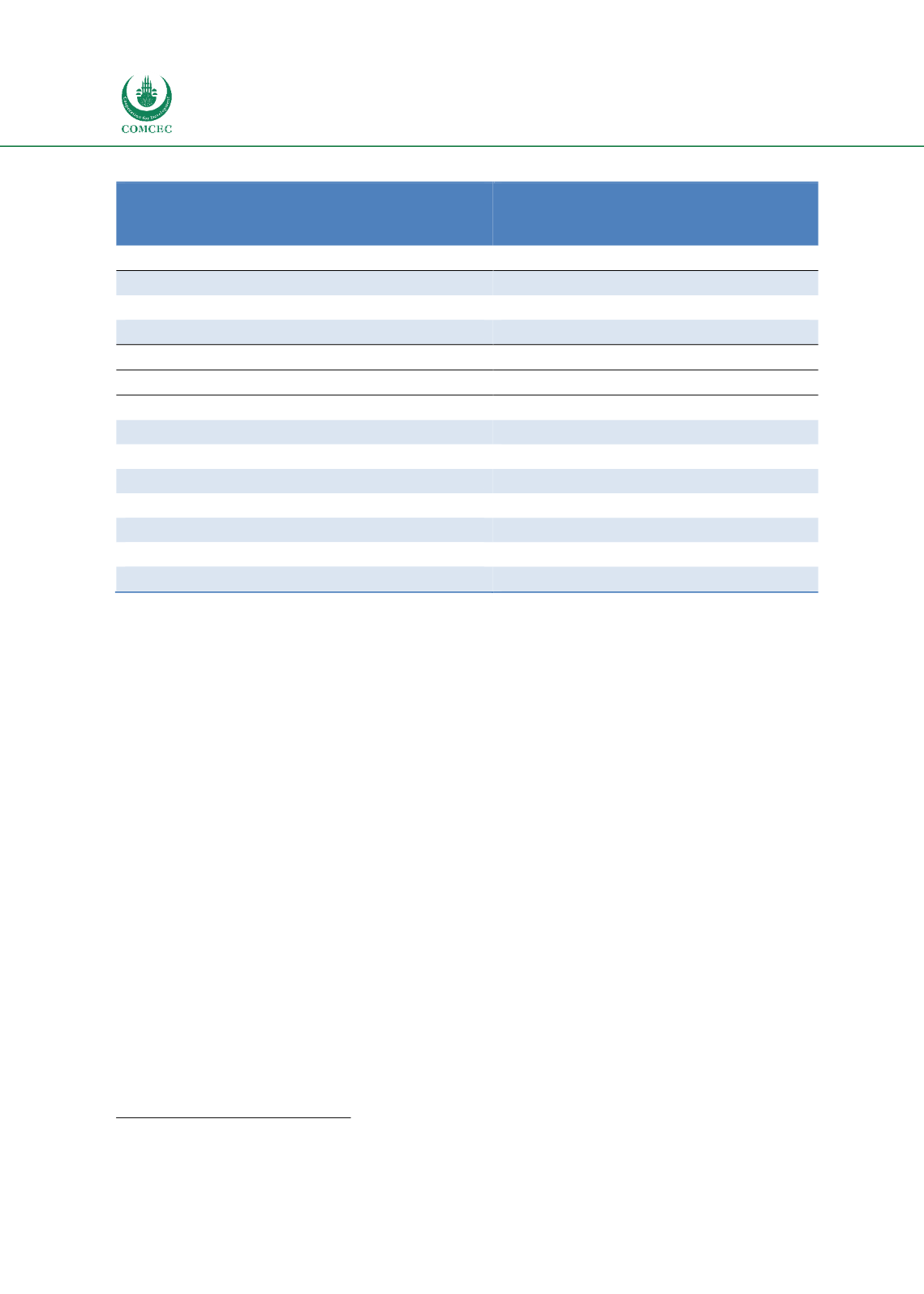

Authorized Economic Operators
In the Islamic Countries:
Enhancing Customs-Traders Partnership
68
Table 3.15. Comparison of Length of Authorization Process: Best Practices and OIC Countries
Authorization Process
days, at least
Best Practice Countries
Canada
--
EU
90
Japan
30
OIC Countries
Egypt
60
Indonesia
60
Jordan
60
Morocco
240
Oman
30
Tunisia
120
Turkey
90
Uganda
900
Source: Authors’ compilation using survey data.
3.5 AEO Programs and Effectiveness of Customs
There are two pillars of the AEO programs: safe and secure trade and trade facilitation. In
other words by implementing the AEO programs Customs aim to divert their resources to high
risk transactions and become a more efficient organization. In this respect Table 3.16 provides
a comparison of trade costs and efficiency among countries with AEO programs and without
AEO programs, the World average and the best practices
7
. All the figures are the averages of
2016-2017 (except the EU and Iran, where 2017 data are not available; no data for
Turkmenistan and Yemen). The first column presents the burden of Customs procedure
indicator (from 1=extremely inefficient to 7=extremely efficient). The average efficiency of
Customs in the World is 4.1. The efficiency of best practice countries is much higher, around 5.
In the table, the most efficient Customs is Malaysia. The striking point is that in the OIC region,
the Customs implementing an AEO program is much efficient comparing to countries where
there is no AEO program. Though, due to limited time dimension, before and after comparisons
are not possible to conduct, hence it is hard to say that AEO brings efficiency as the causality
may run in two ways.
7
There are many factors that affect Customs efficiency and trade costs. However, the figures still indicate the difference
between AEO implementing countries and others on trade costs, time and efficiency.
















